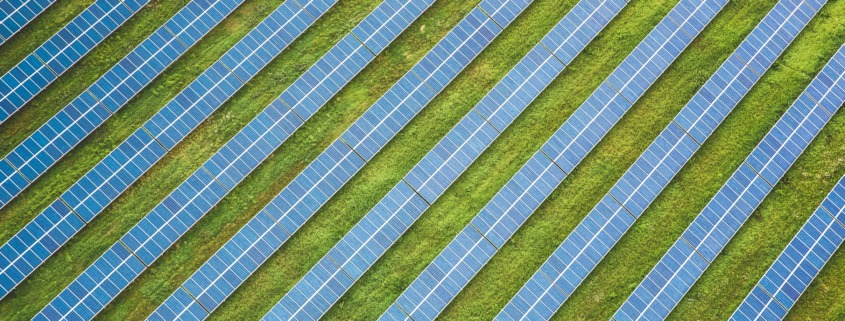It’s time for more ambitious renewable energy targets
Despite record growth in renewables, fossil fuels supply close to 80% of global energy and many wealthy countries are lagging on renewable energy development. At the same time, the UN Secretary-General is calling for these wealthy countries to achieve net-zero emissions by 2040—a goal that will require quickly scaling up renewable energy.
So, what will it take to achieve this goal and what can communities do about it?
Updated Guidance on Climate Action Targets
Wealthy countries must transition to 100% renewable energy generation in the power sector by 2030 and economy-wide by 2040, according to analysis by the Climate Action Network, a global network of over 1,900 civil society organizations in 130 countries.
This recommendation is captured in the network’s Renewable Energy Tracker 2023, which assessed renewable energy development in 60 countries with a focus on global equity. The analysis recognized the responsibility of wealthier countries to move faster than others, and assessed adoption of renewables based on deployment, ambition, and sustainable development.
Achieving the tracker’s recommendations will require tripling renewable energy capacity by 2030, relative to 2022 levels, and electrification across all sectors.
Where Different Regions Stand
Wealthy economies are lagging behind many countries with lower incomes. The top three places on the tracker went to three emerging economies: Chile, Brazil, and China. Additionally, six more emerging economies made the top 20 (Vietnam, Colombia, Jordan, India, Mexico, and Malaysia). These countries were ranked through an assessment that considered the portion of the economy powered by renewables, the share of power generated by renewables, the pace of renewable energy growth, renewable energy plans and investments, and renewable energy jobs.
The Tracker reveals mixed results for Canada, the US, and Chile—the countries where SSG has offices. Chile leads as a frontrunner, ranking first overall. It boasts ambitious targets of 70% renewable electricity and 100% renewable energy in transport by 2030. However, Chile’s renewable mix heavily relies on biofuels, which emit greenhouse gasses. The US also ranks among the frontrunners (9th) due to increased deployment and ambition fueled by recent climate-related funding. Conversely, Canada is ranked as a trailer (33rd), with much of its renewable energy from hydropower and slow adoption of wind and solar.
The Role of Municipalities and Regions
Subnational governments—like towns, cities, counties, provinces, and states—should pay attention to this guidance. Based on its analysis, the Climate Action Network recommends subnational governments commit to stronger targets for the power sector for 2030 and 2035, as well as economy-wide targets.
Municipal and regional governments are already leading on climate action, compared to their national counterparts, and can play a greater role in limiting global warming by increasing their ambitions. They may even save money in the process. For example, in 2021, the City of Toronto updated its climate action plan to aim for net zero emissions by 2040 after SSG’s modelling showed that the target would create greater savings and cost less than aiming for net zero by 2050.
5 key renewable energy actions local governments can take
1. Work with local utilities to install renewable energy capacity
Subnational governments can work with local utilities to accelerate renewable energy adoption. For example, last year, we worked with the City of Saint John’s utility company, Saint John Energy, to figure out how it can supply 100% net-zero energy by 2030. Its Zero30 plan will play a critical role in enabling the City of Saint John to deliver on its climate action plan.
Local governments that have declared a climate emergency, set emission reduction targets, and/or renewable energy targets must actively work to get local utilities on board. Of course, it’s also useful for local governments to establish their own energy utility. This engages residents with a democratic body responsible for energy provision at fair rates. Municipalities like Nelson and New Westminster in British Columbia have successful municipal energy utilities.
2. Provide and coordinate incentives
In Canada, federal renewable energy installation grants are available for building owners, as are some grants in certain provinces. Some municipalities are also offering their own incentives and grants. The funds go towards rooftop solar, solar hot water heaters, geoexchange, or heat-pump installations. Similarly, the US government has dedicated funds for states to create revolving loan funds for energy efficiency buildings. However, applying to such grants can be a hassle; often, building owners need to front the capital before being reimbursed with the grants or incentives.
Local governments can help by providing building owners with coordination services to apply for all levels of grant funding, as well as guidance in choosing appropriate energy systems and connecting with the right installation providers. Creating specific staff positions, such as building retrofits and renewable energy program coordinators, provides an invaluable service in expediting building and property level renewable energy systems. Promoting existing resources such as Rewiring America’s Personal Electrification Plan can be an effective first step.
3. Create and work with local renewable energy cooperatives
Renewable energy cooperatives (REC) are formed by community members to finance and install renewable energy systems; in many cases, these are community-owned. Some even coordinate multi-building installations. They excel at local service, operations and maintenance, and getting bulk discounts on energy systems. Renters, who might not be able or incentivized to install their own solar panels, can contribute to generating renewable energy by becoming members of a REC. Members of the co-op contribute to the capital costs of one or more renewable energy generation systems and reap annual dividends from the sale of energy. RECs are democratic, community-minded, responsible entities to engage in rolling out energy generation infrastructure. Vancouver and Toronto have long-running RECs.
4. Establish a property-assessed clean energy (PACE) program
To help ease the burden of up-front capital requirements for building or property level renewable energy system installations, many local governments offer PACE programs. These are loan programs offered by local governments (sometimes via a third party financial institution) to finance renewable energy systems or home energy efficiency improvements. The loans are repaid via a property tax mechanism. This way, repayments are made by the current property owner who is benefitting from the systems or upgrades. This system helps to overcome financial barriers to installing renewable energy systems. The first PACE program was developed in Berkeley, California, in 2007 and the concept has since spread across North America. The US Department of Energy provides resources for local and state governments interested in setting up their own programs.
5. Install local government or community-owned renewable energy generation
Local governments usually have control of land and policy mechanisms to enable solar and wind farms, district energy, and other utility-scale renewable energy systems that are either government or community owned. Vancouver’s False Creek Neighbourhood Energy Utility, North Vancouver’s Lonsdale Energy Corporation, and Edmonton’s Blatchford Renewable Energy Utility are just a few examples of municipally owned energy systems.




